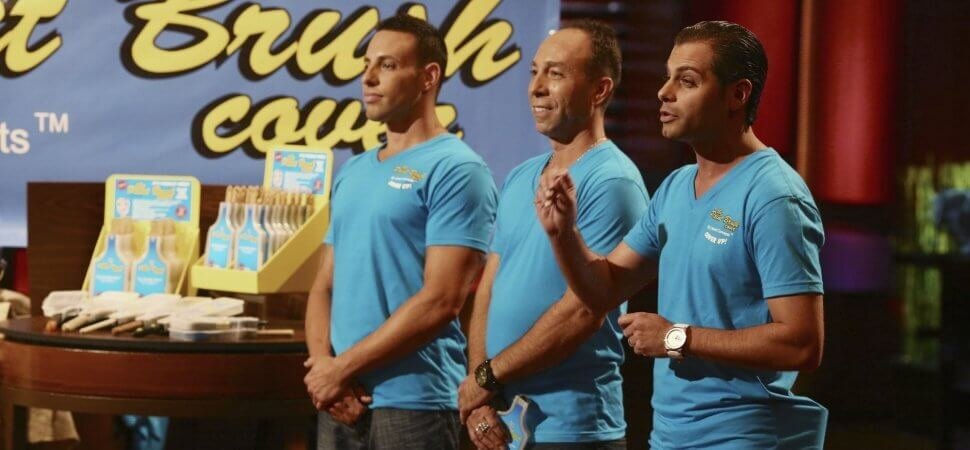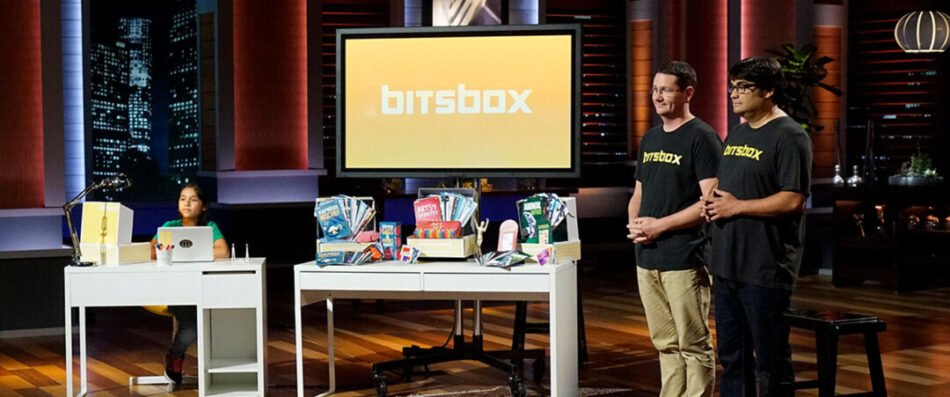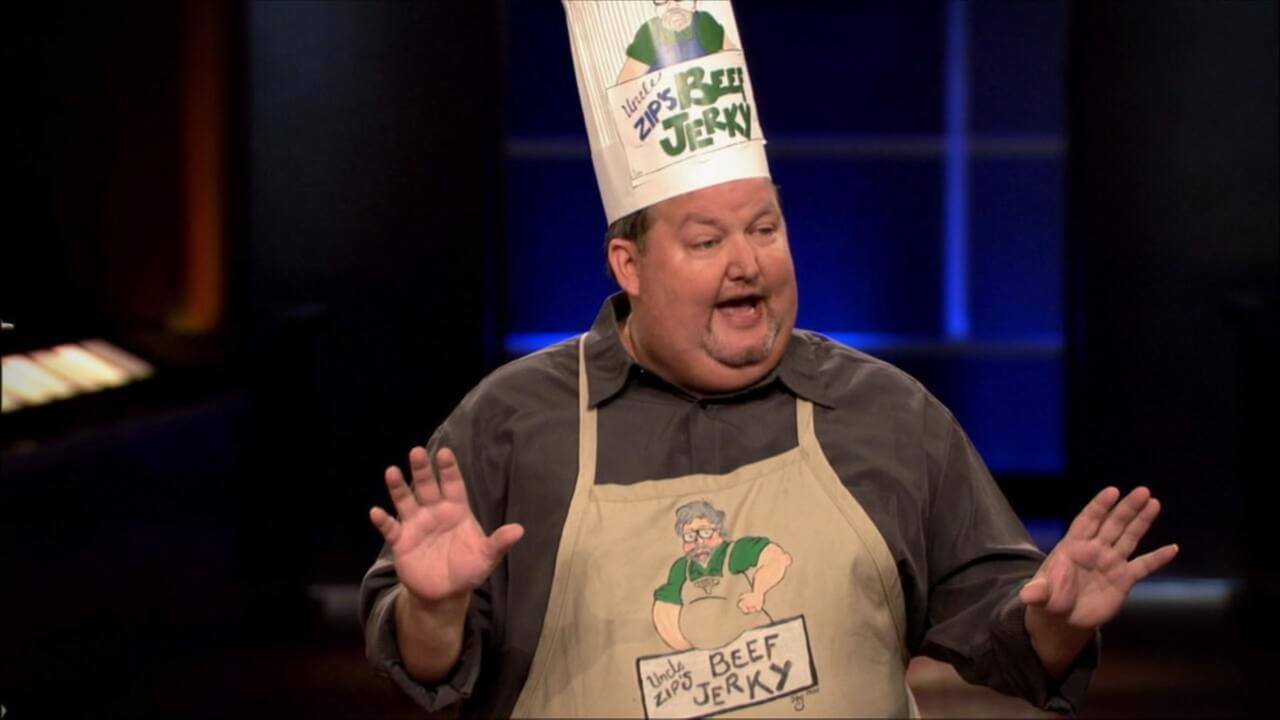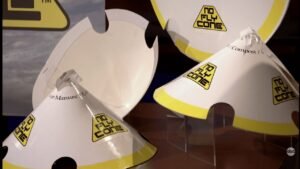Let’s bust a Shark Tank myth: A handshake with a Shark is NOT a magic ticket to riches. Plenty of deals get fancy edits on TV, but most fall apart when real work begins. So let’s talk about the Paint Brush Cover guys—a crew that traded nerves for hustle and showed what happens when you play the long game.
1. Paint Brush Cover’s Shot on Shark Tank
Forget polished tech founders and smooth talkers. The Paint Brush Cover team was all grit—three blue-collar painters from New York, standing on that Season 5 stage with a simple invention. Just a reusable plastic cap that keeps your brush loaded, wet, and boxed up between paint jobs.
But why should you care? Because these are the kind of founders most of us relate to—they sweat for every dollar and built a million-dollar venture off something nearly stupid-simple. If you’ve ever dreamed of flipping $1 hacks into real wealth, this story’s worth your time.
2. Meet the Founders: Sal, John, and Anthony
Let’s get real. Some Shark Tank hopefuls look like they just stepped off the startup PR page. Not these three. Sal DePaola, John DePaola, and Anthony Caputo are true tradesmen—they know all about dropping a brush in a bucket or watching paint dry (literally).
These guys spotted one of painting’s ancient headaches: wasting brushes and cleaning for no reason. So they made something that solved their own problems, then hustled it out to the market. Respect—because the best business ideas usually come from the trenches, not the boardroom.

3. The Pitch: What the Sharks Saw
Here’s how their pitch went, minus the TV fluff. They asked for $50,000 for 10% equity. The original numbers? They’d moved 17,000 units for $35k—half of it in just three months. Cost to make? $0.41. Wholesale price: $2. Retail: $4.
Sal flubbed some lines (happens, trust me), but the product’s quick math was too good to ignore. Insane margins, clear utility, and a problem that every DIYer or pro gets instantly.
If you’re running your own pitch, rewind this moment. Perfect margins. Obvious pain point. Made by actual users. These get Sharks leaning forward.
4. The Money: Deal Details and Valuation
Now for where things get real. Kevin O’Leary circled, offering $100k for a 10% royalty (classic Mr. Wonderful move—he wanted his cut forever, not equity). Mark Cuban lobbed $50k for 20%, which was all-in but less cash than others.
Then Lori Greiner smelled opportunity. She went in heavy: $100k for 20%, then—without blinking—slapped down $200k for 20% to freeze out the competition. Barbara Corcoran didn’t even get her shot.
The founders took Lori’s $200k/20% deal. Clean, smart, and strong. Total valuation: $1 million post-investment. They didn’t hesitate, and that’s rare in the Tank. I’ve seen founders get greedy and talk themselves out of money. These guys came to make a deal, and that’s why they’re still around.
5. Counting the Cash: Net Worth and Sales
The real question: Did that flashy on-air deal mean big money? SharkWorth reports that after Lori joined, Paint Brush Cover’s world opened up. She got them into Home Depot—2,000 stores to start, then Lowe’s, Walmart, and way beyond. For context: Most inventors would kill for just regional shelf space.
Their sales? Shot past $2.5 million within a year or so. That’s wild growth for what was (let’s face it) just a plastic box at launch. Today, with sales across 14,000+ locations and e-commerce buzzing, their company value easily clears seven figures, and the founders banked serious payouts while keeping a big slice of equity.
Here’s the lesson: With the right Shark and a focused game plan, boring products can print money—if the fundamentals kick butt.
6. Shark Tank Effect: What Happened After TV
Remember, Shark Tank is just the starting gun—after the camera fades is where most founders flame out. Paint Brush Cover didn’t. Lori Greiner got strategic: she redesigned their packaging (the thing literally popped off shelves), brought them onto QVC, and blasted their way into every major hardware and home goods store.
Stores didn’t just nibble—they bought in bulk. The Shark Tank effect is real, but only if you ride the wave hard, fix what’s broken, and stay sharp. These guys did all three. When some founders chase viral hype, the Paint Brush Cover crew chased shelf space and repeat sales.
7. Product Evolution: New Products and Expansion
This is the gritty part no one talks about—getting your first hit, then actually building a business. Paint Brush Cover didn’t stop at brushes. They quickly launched a roller cover, grabbing another juicy pain point for painters.
They expanded steadily. No big pivots into weird, unrelated gadgets—just more ways for pros and weekend warriors to spend less time cleaning and more time working (or resting). That’s what makes for lasting brands: not wild leaps, but smart, adjacent moves that keep the core customer coming back.
If you’re plotting your own launch, study their model. Prove the first product, learn distribution, then fill gaps your shoppers complain about. It’s simple, but most founders get bored and wander. Not these guys.
8. Is Paint Brush Cover Still Growing?
Short answer? Yes, but not in the overnight unicorn way. Paint Brush Cover turned their TV fame into sustainable growth. They’re still in all the big stores, still rolling out new SKUs, and they’ve kept their leadership steady.
Don’t get it twisted—this isn’t a Scrub Daddy-level juggernaut, but it’s a true Shark Tank success. Most products vanish within a year. These brush guys are still here, still paying themselves, and still growing their category. If you want a blueprint for one-hit wonder survival, this might be the best episode to watch twice.

9. The Takeaway: Lessons for Entrepreneurs
Let’s break out what really matters. First: solve a problem you know, not just a trend. Paint Brush Cover started as a hack for their own toolboxes, not a Silicon Valley mood board.
Second, margins rule. Low cost, high retail, easy to stack in stores—this keeps your negotiating power high and your risk low. If your idea is complicated or slim-margin, Sharks will eat you alive.
Third: Sometimes, you need a partner, not just cash. Lori Greiner brought retail muscle, TV skill, and the playbook to get into Walmart, Home Depot, and beyond. The right Shark (or SharkWorth partner, as I say) unlocks more than just funding.
And last, keep expanding—but do it in your lane. Don’t get distracted by shiny objects and disruptive nonsense if your core market is hungry for add-ons.
I’ve sat across the pitch table more times than I care to admit. The best founders win because they stay humble, hustle like hell, and know when to take a great deal. Paint Brush Cover is still swimming for a reason.
FAQs
1. Is Paint Brush Cover Shark Tank still in business?
Yes, they’re still up and running, sold nationwide in major hardware and home improvement stores.
2. How much money did Paint Brush Cover make after Shark Tank?
They surpassed $2.5 million in sales and still grow with each new account and product line.
3. What was the deal Lori Greiner made and did it close?
Lori invested $200,000 for 20% equity—and she closed. She’s still a partner.
4. Can you still buy Paint Brush Cover in major stores?
Absolutely—Home Depot, Lowe’s, Walmart, and more. Plus, their site and Amazon.
5. Who owns Paint Brush Cover now?
The original founders—Sal, John, and Anthony—plus Lori Greiner. No major ownership drama.
6. Did the founders launch any new products after Shark Tank?
Yes. They added the roller cover, and keep growing the accessory line.
7. Was the Paint Brush Cover deal a Shark Tank success story?
For sure. Classic modest win—not a billion-dollar company, but a sustainable, growing brand.
8. How does the Paint Brush Cover actually work for painters?
It snaps over your brush, locks in moisture, and keeps your bristles wet—no more ruined brushes or wasted paint.
If you want the Shark Tank blueprint that works, study Paint Brush Cover. Simple, useful, well-executed, and nobody lost their shirt in the process. Now that’s real hustle—no fairy tales, just business. For more inside info and net worth updates, check out SharkWorth—because flashy stories are fun, but smart money rides on the grind.










